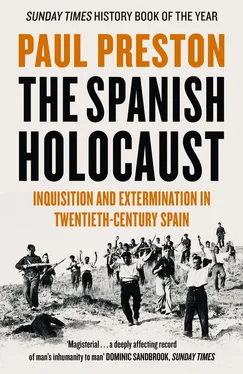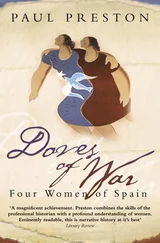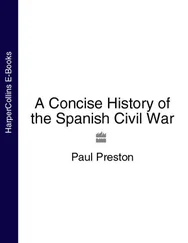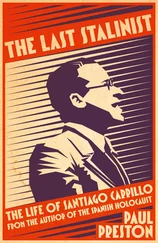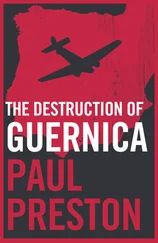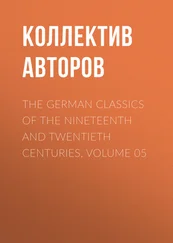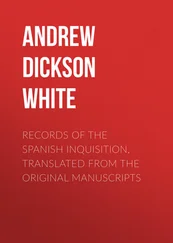In Catalonia, where anarchists and other left-wing groups collaborated with the Socialists in the Workers’ Alliance, events were rather more dramatic. Many of the local committees took over their villages and then waited for instructions from Barcelona, which never came. 89In the Catalan capital, ill prepared and reluctant, Companys proclaimed an independent state of Catalonia ‘within the Federal Republic of Spain’ in protest against what was seen as the betrayal of the Republic. The motives behind his heroic gesture were complex and contradictory. He was certainly alarmed by developments in Madrid. He was also being pressured by extreme Catalan nationalists to meet popular demand for action against the central government. At the same time, he wanted to forestall revolution. Accordingly, he did not mobilize the Generalitat’s own forces against General Domingo Batet, the commander of military forces in Catalonia. The working class had also been denied arms. Accordingly, Batet, after trundling artillery through the narrow streets, was able to negotiate the surrender of the Generalitat after only ten hours of independence, in the early hours of 7 October. 90The right in general, and Franco in particular, never forgave Batet for failing to make a bloody example of the Catalans. 91
Asturias was a different matter. Once the news of the CEDA entry into the government reached the mining valleys in the late afternoon of 4 October, the rank-and-file workers took the lead. There, the solidarity of the miners had overcome partisan differences and the UGT, the CNT and, to a much lesser degree, the Communist Party were united in the Workers’ Alliance. It is illustrative of the fact that Socialist leaders had never really contemplated revolutionary action that, even in Asturias, the movement did not start in the stronghold of the party bureaucracy, at Oviedo, but was imposed upon it by outlying areas – Mieres, Sama de Langreo and Pola de Lena. Similarly, in the Basque country, the workers seized power only in small towns like Eibar and Mondragón. Mondragón was an exception, but in Bilbao and the rest of the region rank-and-file militants waited in vain for instructions from their leaders. Throughout the insurrection, the president of the Asturian mineworkers’ union, Amador Fernández, remained in Madrid, and on 14 October, without the knowledge of the rank and file, tried to negotiate a peaceful surrender. 92
The uncertainty demonstrated by the Socialist leadership was in dramatic contrast to the determination of Gil Robles. Indeed, his behaviour, both during and immediately after the October revolt, sustained his later admission that he had deliberately provoked the left. While Socialist hesitation on 5 October suggested a quest for compromise, the new Radical–CEDA government manifested no desire for conciliation and only a determination to crush the left. Gil Robles made it clear at a meeting with his three ministers that he had no faith in either the Chief of the General Staff, General Carlos Masquelet, whom he regarded as a dangerous liberal, or General Eduardo López Ochoa, who was put in charge of restoring order in Asturias. At the cabinet meeting on 6 October, however, their proposal to send Franco to take over operations in Asturias was overruled and the views of Alcalá Zamora, Lerroux and his more liberal cabinet colleagues prevailed. 93However, in the event Franco was able to play a role that ensured that the rebellion would be repressed with considerable savagery.
Gil Robles demanded the harshest policy possible against the rebels. On 9 October, he rose in the Cortes to express his support for the government and to make the helpful suggestion that parliament be closed until the repression was over. Thus the anticipated crushing of the revolution would take place in silence. No questions could be asked in the Cortes and censorship was total for the left-wing press, although the right-wing newspapers were full of gruesome tales – never substantiated – of leftist barbarism. The new Minister of Agriculture, Manuel Giménez Fernández, one of the few sincere social Catholics within the CEDA, struck a dissident note when he told the staff of his Ministry on 12 October, ‘the disturbances which have taken place against the state have not started on the rebels’ side of the street but on ours, because the state itself has created many enemies by consistently neglecting its duties to all citizens’. 94The violence on both sides during the events of October and the brutal persecution unleashed in the wake of the left-wing defeat would deepen existing social hatreds beyond anything previously imagined.
Initially, because of Franco’s reputation as a ferocious Africanista, President Alcalá Zamora rejected the proposal to put him formally in command of troops in Asturias. Nevertheless, the Minister of War, the Radical Diego Hidalgo, insisted and gave Franco informal control of operations, naming him his ‘personal technical adviser’, marginalizing his own General Staff and slavishly signing the orders drawn up by him. 95The Minister’s decision was highly irregular but understandable. Franco had detailed knowledge of Asturias, its geography, communications and military organization. He had been stationed there, had taken part in the suppression of the general strike of 1917 and had been a regular visitor since his marriage to an Asturian woman, Carmen Polo. To the delight of the Spanish right, and as Alcalá Zamora had feared, Franco responded to the miners in Asturias as if he were dealing with the recalcitrant tribesmen of Morocco.
Franco’s approach to the events of Asturias was coloured by his conviction, fed by the regular bulletins he received from the Entente Anticommuniste of Geneva, that the workers’ uprising had been ‘carefully prepared by the agents of Moscow’ and that the Socialists, ‘with technical instructions from the Communists, thought they were going to be able to install a dictatorship’. 96That belief justified for Franco and for many on the extreme right the use of troops against Spanish civilians as if they were a foreign enemy.
With a small command unit set up in the telegraph room of the Ministry of War in Madrid, Franco controlled the movement of the troops, ships and trains to be used in the suppression of the revolution. 97Uninhibited by the humanitarian considerations which made some of the more liberal senior officers hesitate to use the full weight of the armed forces against civilians, Franco regarded the problem with the same icy ruthlessness that had underpinned his successes in the colonial wars. One of his first decisions was to order the bombing and artillery shelling of the working-class districts of the mining towns. Unmoved by the fact that the central symbol of rightist values was the reconquest of Spain from the Moors, he shipped Moroccan mercenaries to Asturias, the only part of Spain where the crescent had never flown. He saw no contradiction about using them because he regarded left-wing workers with the same racist contempt which had underlain his use of locally recruited mercenary troops, the Regulares Indígenas, against the Rif tribesmen. Visiting Oviedo after the rebellion had been defeated, he spoke to a journalist in terms that echoed the sentiments of Onésimo Redondo: ‘This war is a frontier war and its fronts are socialism, communism and whatever attacks civilization in order to replace it with barbarism.’ 98Without apparent irony, despite Franco’s use in the north of colonial forces, the right-wing press portrayed the Asturian miners as puppets of a foreign, Jewish–Bolshevik conspiracy. 99
The methods used by the colonial army, just as in Morocco, were aimed at paralysing the civilian enemy by terror. The African Army unleashed a wave of brutality that had more to do with their normal practice when entering Moroccan villages than any threat from the defeated Asturian rebels. The troops used left-wing prisoners as human shields to cover their advances. Innocent men, women and children were shot at random by the Moroccan units under the command of Franco’s crony, Lieutenant Colonel Juan Yagüe Blanco. This contributed to the demoralization of the poorly armed revolutionaries. More than fifty male and female prisoners, many of them wounded, were interrogated and immediately shot in the yard of Oviedo’s main hospital and their bodies burned in the crematorium oven. Several more were executed without trial in the Pelayo barracks. Other prisoners were tortured and women raped. In the mining village of Carbayín, twenty bodies were buried to hide evidence of torture. Houses and shops were looted of watches, jewellery and clothing, while anything not portable was smashed. 100
Читать дальше
